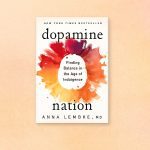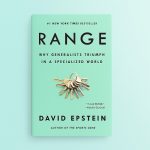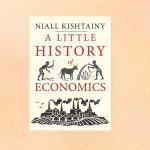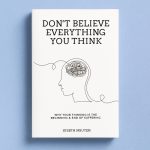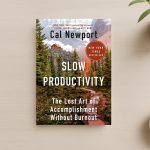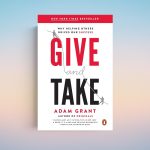Don’t Believe Everything You Think: Why Your Thinking Is The Beginning & End Of Suffering (Beyond Suffering) by Joseph Nguyen reveals a liberating truth: our suffering is not caused by life’s events, but by the thinking we attach to them. Drawing on timeless wisdom and practical psychology, Don’t Believe Everything You Think by Joseph Nguyen shows how to step out of compulsive mental chatter, dissolve emotional pain, and reconnect with your natural state of peace and joy. Through clear explanations, inspiring stories, and actionable frameworks, this book guides you to live from presence and inspiration rather than fear and desperation. It’s an accessible yet profound roadmap to ending unnecessary suffering and creating a life grounded in clarity, love, and freedom.
1. Introduction to Don’t Believe Everything You Think by Joseph Nguyen
Don’t Believe Everything You Think by Joseph Nguyen is a modern guide to psychological and spiritual freedom. With a tone that blends personal coaching insights, mindfulness principles, and practical philosophy, Nguyen explores the radical but liberating idea that most of our emotional suffering is not caused by circumstances themselves, but by our thinking about those circumstances.
The book proposes a deceptively simple but transformative solution: recognize that thoughts are not reality, and consequently, you are not compelled to identify with them. By developing the skill of non-thinking (in the sense of not engaging with habitual, judgmental, and self‑defeating mental chatter), you can dissolve much of your inner turmoil and access a stable state of joy, peace, and fulfillment.
Nguyen’s narrative mixes:
– Personal stories of struggle and breakthrough.
– Direct challenges to common beliefs about the mind.
– Explanations of the “Three Principles” model of human experience.
– Practical frameworks for shifting away from destructive thought patterns.
– A step‑by‑step process for living from inspiration rather than desperation.
2. Author Biography
Joseph Nguyen is a writer, speaker, and coach who helps people transcend self‑limiting mental patterns to live with greater clarity, freedom, and purpose. Drawing from psychology, mindfulness, and spiritual traditions, Nguyen has developed an accessible teaching style that emphasizes experiential insight over intellectual accumulation.
Before developing the ideas that became Don’t Believe Everything You Think, Nguyen pursued his own transformative journey. He struggled with anxiety, dissatisfaction, and a restless search for external solutions – consuming books, therapy, self‑help methods, and spiritual teachings – before realizing that the core problem wasn’t in his circumstances, but in how he related to his own thoughts. From that realization, he shifted his coaching and writing toward helping others see through the illusion of mental content and rediscover the peace that exists beneath it.
3. Structure of the Book Don’t Believe Everything You Think by Joseph Nguyen
Don’t Believe Everything You Think by Joseph Nguyen is logically sequenced in a progression that takes readers from understanding the root cause of psychological suffering to living with newfound freedom. Its key components:
Introduction: Sets expectations: the book is designed not to provide “more information” but to lead to insight.
Chapters 1–3: Locating the Source of Suffering – Differentiates between unavoidable pain and optional suffering; introduces the root cause as over‑identification with thinking.
Chapters 4–6: The Mechanics of Experience – Distinguishes between thought and thinking, explains how human experience is created, and introduces the “Three Principles” framework.
Chapters 7–10: Moving Beyond Overthinking – Outlines the practice of non‑thinking; addresses common fears about losing ambition or productivity.
Chapters 11–15: Living from Presence and Inspiration – Shifts focus from mental control to intuitive flow; explores love, creativity, and openness as a way of life.
Chapters 16–17 & Guides: Anticipates potential obstacles, provides exercises and environmental advice, and reinforces the transformative mindset.
4. Introduction – The Promise of Transformation
Nguyen opens with a bold claim: reading and understanding the principles in this book can fundamentally change your life. He warns against reading for mere intellectual stimulation – instead, urges readers to look for insight, a felt recognition that arises from within.
He points out that our longing for money, success, relationships, and security is actually a longing for the feelings we imagine they will give us – joy, peace, love, fulfillment. But those feelings are available independent of external events, if we understand where our experience truly comes from.
This reframing shifts the goal:
– From controlling life’s conditions.
– To directly accessing the inner state we seek.
5. Main Ideas & Frameworks
Don’t Believe Everything You Think by Joseph Nguyen ’s central thesis can be distilled into several interconnected principles.
5.1 Pain vs. Suffering
Borrowing from the Buddha’s metaphor of two arrows:
– The first arrow represents inevitable physical or situational pain.
– The second arrow is our mental reaction to that pain – the judgments, fears, and stories we attach to it.
The first arrow is unavoidable, but the second arrow is optional. This reframing strips suffering of inevitability.
5.2 The Root Cause: Your Thinking
Nguyen distinguishes between:
– Thoughts – spontaneous, transient mental events that arise naturally, often without our deliberate control.
– Thinking – the act of consciously or unconsciously engaging with thoughts, spinning them into narratives, judgments, and mental movies.
Pain arises in life, but suffering comes from believing and elaborating on these thoughts. This is the essence of the title: don’t believe everything you think.
5.3 We Live in a World of Thought
Drawing on the “Three Principles” paradigm (Sydney Banks):
- Mind – the universal intelligence or energy behind life.
- Consciousness – our capacity to be aware.
- Thought – the creative force that shapes our moment-to-moment experience.
We do not live in a world of objective reality; we live in a personal reality filtered through thought. Changing thought changes perceived reality.
5.4 Non-Thinking: The Practice of Freedom
Nguyen does not advocate intellectual suppression but non‑engagement with unnecessary mental chatter. Key points:
– You cannot stop thoughts from arising, but you can stop clinging to them.
– Freedom comes from letting thoughts pass without identifying with them.
– A quiet mind allows presence, creativity, and connection to flourish.
5.5 Goals: Inspiration vs. Desperation
Responding to fears that non-thinking might kill ambition, Nguyen differentiates:
– Desperation Goals: Driven by scarcity, insecurity, and the need to prove oneself. These feel heavy, urgent, and never satisfying.
– Inspiration Goals: Arise from a state of fullness; pursued out of joy and curiosity, not need.
Living from inspiration leads to sustainable creativity and contentment.
5.6 Love, Joy, and the Natural State
When overthinking subsides, what remains is not emptiness but a natural state of inner abundance:
– Unconditional love for self and others.
– Joy untethered from conditions.
– An intuitive sense of how to act in the world.
6. Chapter-by-Chapter Insights
Below is a synthesized flow of key lessons, integrating book content with expanded context from Nguyen’s coaching philosophy and relevant research.
6.1 The Journey to the Root Cause of Suffering
Nguyen recounts his own exhaustive search through self-help literature, psychology, spiritual retreats, and lifestyle changes – all of which improved circumstances but did not dissolve a persistent baseline of anxiety and dissatisfaction.
Breakthrough came in realizing that his relationship to thought – not the external world – was the true driver of inner turbulence.
6.2 The Root Cause of All Suffering
The claim: “We live in a world of thought, not reality.”
– Two people in the same place can experience radically different “realities” because of their different thinking.
– Understanding this rescues us from the belief that circumstances dictate emotional life.
6.3 Why Do We Even Think?
The human brain evolved to solve problems and simulate outcomes. But in the modern world, that same simulation capacity can trap us in unnecessary rumination.
Don’t Believe Everything You Think by Joseph Nguyen emphasizes: thinking is a tool, not a master – it’s best applied when deliberately chosen, not compulsively running.
6.4 Thoughts vs. Thinking
– Thought: Flashes on the mental screen.
– Thinking: Picking up the thought and weaving ongoing commentary.
Letting thoughts float by like clouds – without grabbing them – short-circuits much suffering.
6.5 Positive Thinking vs. Presence
Nguyen warns that chasing “positive thinking” still keeps you trapped in the realm of thought. Presence and awareness – noticing without judgment – offer deeper freedom.
6.6 How the Human Experience Is Created
Through the interplay of Mind, Thought, and Consciousness, we continuously generate our version of reality. Recognizing the constructed nature of experience loosens thought’s grip.
6.7 Stopping Overthinking
You cannot force the mind to stop. The key is non‑interference:
– Notice thoughts without feeding them.
– Let attention return to the present moment.
– Over time, thinking naturally quiets.
6.8 Thriving Without Constant Thinking
Refuting fears of becoming directionless, Nguyen argues that letting go of compulsive thinking allows intuition to guide action with greater clarity.
6.9 Rethinking Goals
Goals created from desperation perpetuate scarcity. Those arising from inspiration are self‑fueling and joyful, regardless of outcome.
6.10 Love, Creation, and Intuition
When the mental noise subsides, love and creative energy surface naturally. Decision-making shifts from analysis paralysis to a felt sense of rightness.
6.11 Sustaining Joy in Daily Life
Don’t Believe Everything You Think by Joseph Nguyen emphasizes that peace, joy, and love are not results of “achieving” but of being. This requires continual return to the now, recognizing each moment is complete in itself.
7. Practical Tools and Frameworks
Don’t Believe Everything You Think by Joseph Nguyen weaves in concrete steps for embodying these principles.
7.1 Reflection Prompts
Encourages journaling on:
– What thoughts do I repeatedly believe that cause suffering?
– Which feelings am I truly seeking beneath my goals?
7.2 Creating a Non-Thinking Environment
Reduce triggers that constantly pull you into the mind:
– Limit exposure to high-drama media.
– Create physical spaces for quiet.
– Use cues (breath, nature contact) to anchor presence.
7.3 Overcoming Destructive Habits
Habits lose grip when you:
- See they are fueled by thought‑generated feelings.
- Stop treating thoughts as commands.
- Replace compulsive behaviors with mindful awareness.
7.4 Recognizing “End Goals”
Shift from “means goals” (to get something else later) to “end goals” you live now – states of being like peace, love, vitality.
8. Thematic Integration
Nguyen’s work is aligned with:
– Mindfulness teaching – parallels to Eckhart Tolle’s The Power of Now.
– Cognitive defusion in Acceptance and Commitment Therapy (ACT).
– Existential philosophy – freedom arising from owning one’s perception and choices.
What distinguishes this book is its simple, conversational framing that blends spiritual insight with modern coaching strategies.
9. Potential Obstacles & How to Address Them
Don’t Believe Everything You Think by Joseph Nguyen anticipates that:
– The mind will resist non-thinking, claiming it’s dangerous or irresponsible.
– Old habits will reassert themselves.
– Societal conditioning will encourage goal-setting from insecurity.
He suggests:
– Treat resistance as another thought – observe it without engagement.
– Keep practicing environmental design to reduce triggers.
– Revisit the core insight: feelings come from thought, not circumstances.
10. Enduring Value
Don’t Believe Everything You Think by Joseph Nguyen ’s enduring appeal lies in its accessibility:
– Strips away jargon.
– Avoids abstract metaphysics.
– Offers direct experiential pointers.
It helps bridge the gap between motivational self-help and deeper spiritual growth, making it valuable for readers in both camps.
11. Conclusion: Don’t Believe Everything You Think by Joseph Nguyen
Don’t Believe Everything You Think by Joseph Nguyen delivers a straightforward but potentially life-changing message: your inner life is shaped not by the world “out there,” but by the thinking you believe and engage with. By seeing through the illusion of thought-reality, releasing compulsive mental engagement, and allowing inspiration to guide your actions, you can end much of your suffering and live from a naturally abundant state.
Nguyen’s mix of personal narrative, simple analogies, and actionable advice makes the book not just a philosophical treatise, but a practical guide to real-world freedom.
If you found this summary helpful, please share it or leave a comment below.


